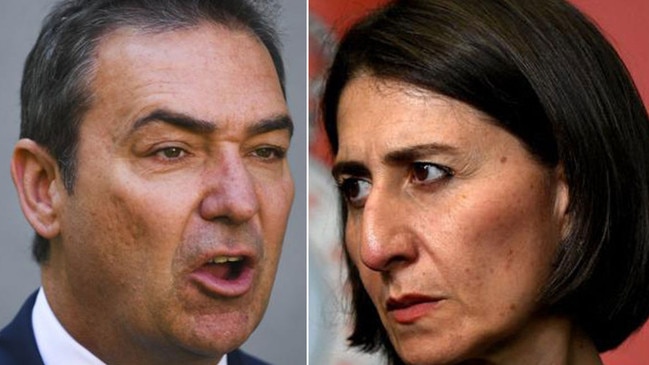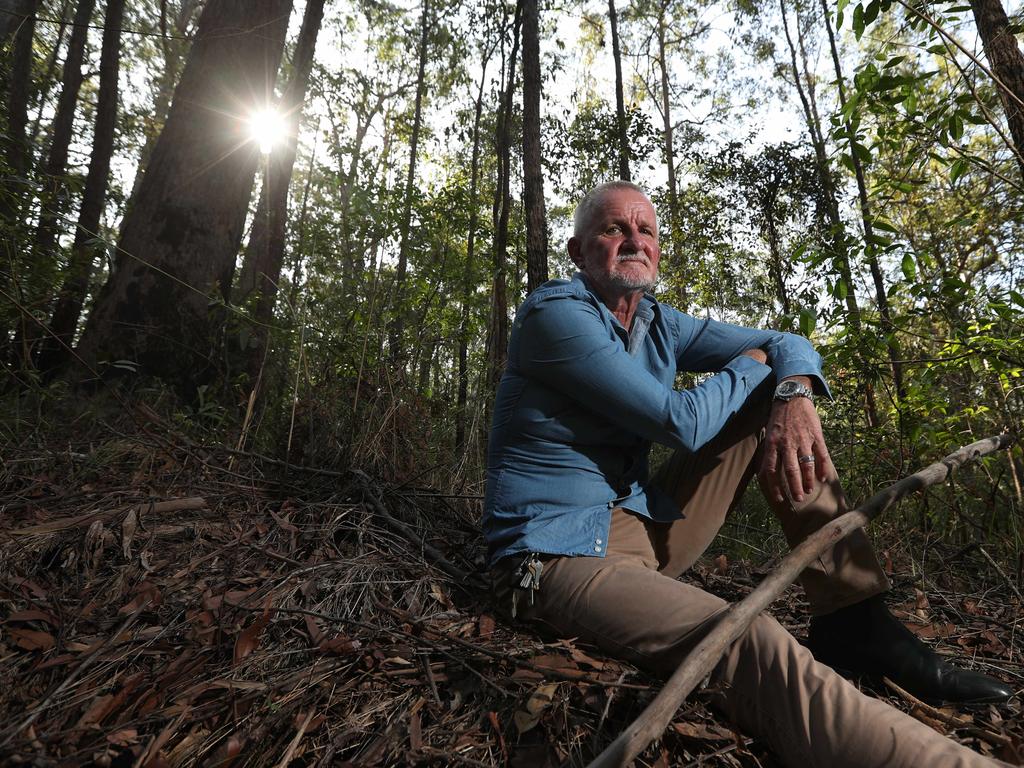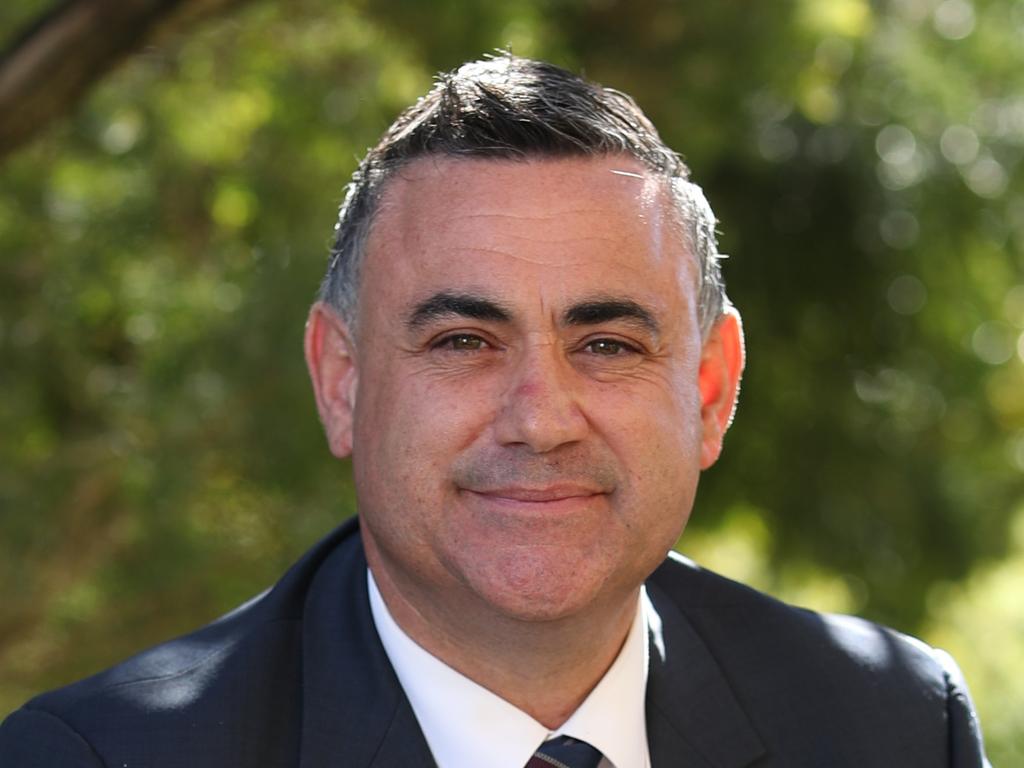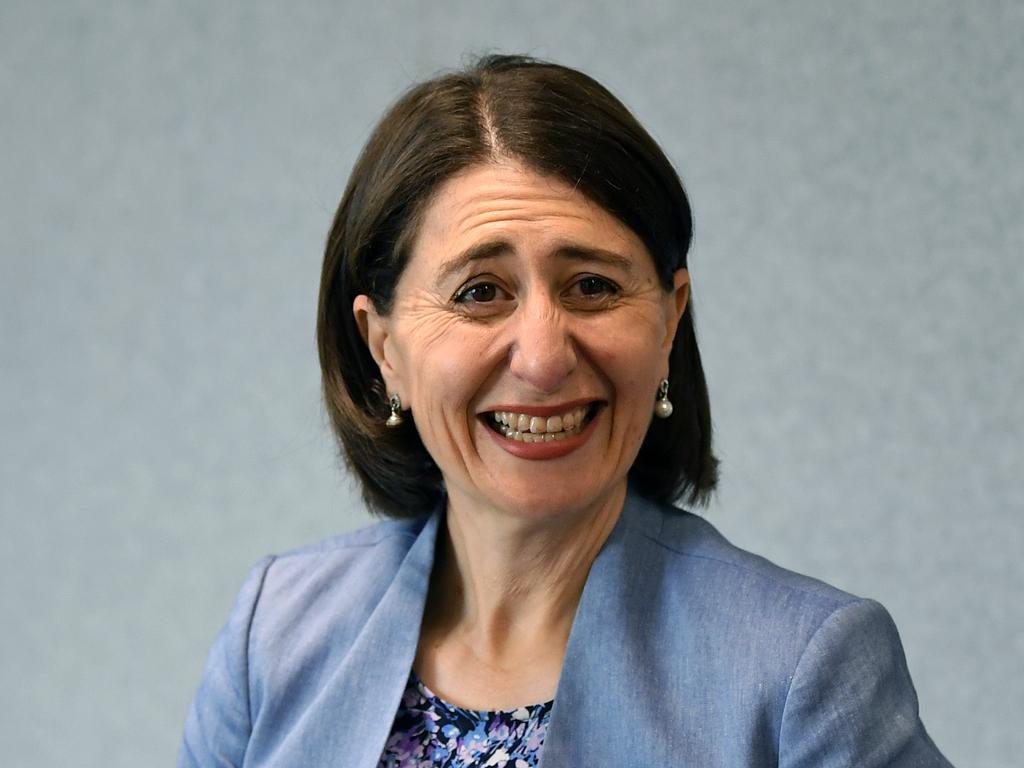South Australia, NSW drive new resolve on climate change
SA’s Steven Marshall and NSW’s Gladys Berejiklian are expanding their climate change programs.

Two Liberal premiers are expanding their states’ climate change programs, with South Australia’s Steven Marshall vowing to accelerate moves towards a zero-emissions economy and NSW signing a $2bn climate and energy deal with Scott Morrison.
In an interview with The Australian, Mr Marshall said he would put his “foot to the floor’’ on renewable energy and called for an end to the left-right split in the climate debate, which was wrongly presented as “the right being pro-coal and the left being pro-renewables”.
Mr Marshall said climate change was “without a doubt” a key driver of the breadth and ferocity of this summer’s bushfire crisis as he vowed to bring forward the state’s net zero emission target from its scheduled date of 2050.
Mr Marshall’s commitment came as the Prime Minister and NSW Premier Gladys Berejiklian prepared to unveil on Friday a $2bn deal to unlock gas reserves and fund climate-friendly projects. These would include carbon capture and storage and methane reduction from landfills, which would complement the emissions-reduction potential of the clean energy sector.
The bushfire crisis has prompted attacks on the federal government’s climate change policies by Labor and environmental groups. The deal announced with NSW is expected to be first of several with state governments that deepen emissions-reduction programs.
Under the deal with NSW, the Morrison government, which has pledged to “meet and beat” its Paris climate target, will provide almost $1bn for NSW-based emissions-reductions initiatives and support the establishment of a renewable energy zone in the state’s central west to help large-scale generators pump power into the grid.
The deal is headlined by a commitment from Ms Berejiklian to back investment in gas development that would pump an extra 70 petajoules into the domestic market each year — the equivalent of the yet-to-be-approved Santos Narrabri gas project.
The NSW and federal governments will also jointly underwrite the HumeLink and the Queensland-NSW interconnectors to strengthen electricity grid reliability.
Mr Marshall said his government was moving “headlong down the path of renewables’’, developing wind and solar, with the assistance of the federal government through the Clean Energy Corporation.
He said there was never a focus on the fact the federal government was “supporting what we are doing, while in the Labor states all the coal assets are owned at the state level”.
“A lot of people thought when I got elected that we would be scaling back the state’s focus on renewable energy, when in fact we are putting the foot to the floor,” Mr Marshall said. “We are adding hydrogen into the mix and we aren’t looking to coal or nuclear. We need to move beyond this left-right split on these issues.”
In a boost to the Prime Minister, Mr Marshall threw his formal support behind Mr Morrison’s proposed royal commission into the bushfires, which other states have dismissed as unnecessary.
Despite South Australia’s chequered past with power storage and reliability, Mr Marshall said the state was on track to meet at least three-quarters of its needs from wind and solar by 2025. Last September, more than half of the state’s power was being produced with wind and solar, and the state is moving to resolve storage issues.
The Marshall government has invested $100m in a home battery storage scheme. The state is on track to have the highest home battery penetration in the world.
Mr Marshall said the state would increasingly meet other energy needs through hydrogen rather than coal. He ruled out nuclear on cost grounds, saying no investment could be found without bipartisan federal support.
At the former Mitsubishi automotive plant in Tonsley, Australian Gas Infrastructure Group and its subsidiary Australian Gas Networks are building a hydrogen manufacturing plant that will use electricity generated by renewables to split water into oxygen and hydrogen gas. The hydrogen will be blended with natural gas to make up 5 per cent of gas supplied to customers in Adelaide’s south, with plans to expand across the state.
While Mr Marshall enjoys a good working relationship with Mr Morrison, he said “everyone” — including Canberra — should do more to reduce emissions.
“If you are trying to say one person needs to change on this issue you are missing the point,” the Premier said. “It is local government, state government, the federal government, businesses, households, everyone.”
Mr Marshall made it clear he believed the role of climate change must be a key aspect of any inquiry into the summer fires, a view shared by former AFP commissioner Mick Keelty, who is heading up a rapid-turnaround inquest for the state government and will report by June 30 to recommend changes ahead of next summer.
While the inquiry will examine landclearing and native vegetation laws that prevent landowners and councils from clearing trees, as well as the state’s record on the adequacy of winter burn-offs, it will also look into the role of climate change in the fires that ravaged the Adelaide Hills and burned half of Kangaroo Island.
Mr Marshall said the theme of “climate resilience” would be a feature of his soon-to-be released climate statement, in which he will revisit the 2050 zero net emissions target. “We have made it really clear that we will be net zero emissions by 2050 but I hope that when we release our strategy, we can lean in even further against that target,” he said. “There is no doubt we have a changing climate, it has always been changing, but the current circumstances are leading to weather patterns that are more likely to increase the likelihood of more severe bushfire events.
“We have to adapt. It’s as simple as that. That’s why a big part of our statement will be climate resilience — what can we do to mitigate against that, what can we do to respond more effectively.”
Additional reporting: GREG BROWN







To join the conversation, please log in. Don't have an account? Register
Join the conversation, you are commenting as Logout